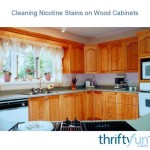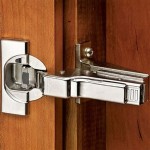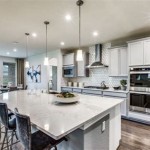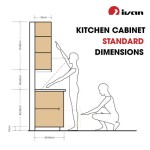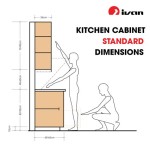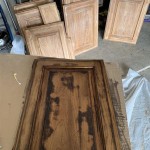Overhead Kitchen Cabinet: Optimizing Space and Style
Overhead kitchen cabinets represent a critical component of kitchen design, serving as a primary storage solution while simultaneously contributing to the overall aesthetic appeal of the space. These cabinets, mounted on the wall above countertop level, offer a practical and efficient way to maximize storage capacity, particularly in kitchens with limited square footage. The selection, installation, and organization of overhead cabinets play a significant role in enhancing the functionality and visual harmony of the kitchen environment.
The design and construction of overhead kitchen cabinets have evolved considerably over time, reflecting changes in architectural styles, material availability, and consumer preferences. Early kitchens often featured simple, utilitarian shelves or open storage areas. As kitchens became more integrated into the home and design aesthetics gained importance, enclosed cabinets became increasingly prevalent. Today, a wide array of styles, materials, and configurations are available, allowing homeowners to customize their overhead cabinets to suit their specific needs and design aspirations.
Overhead cabinets are available in a multitude of dimensions, ranging from standard heights and widths to custom sizes designed to fit unique spaces. Standard cabinet heights typically range from 30 inches to 42 inches, with varying depths. The choice of height often depends on ceiling height, the desired amount of storage space, and the overall kitchen design. Shorter cabinets may be preferred in kitchens with lower ceilings or to create a more open and airy feel, while taller cabinets maximize vertical storage capacity in kitchens with ample ceiling height. Widths typically range from 12 inches to 36 inches, with increments of 3 inches commonly available. Custom cabinet sizes can be tailored to fit specific architectural constraints or to accommodate specialized appliances or storage needs.
The materials used in the construction of overhead kitchen cabinets significantly impact their durability, appearance, and cost. Common materials include wood, plywood, particleboard, medium-density fiberboard (MDF), and metal. Solid wood cabinets are generally considered the most durable and aesthetically pleasing, but they also tend to be the most expensive. Plywood offers a balance of strength and affordability, making it a popular choice for cabinet boxes. Particleboard and MDF are less expensive alternatives, often used for cabinet doors and panels. Metal cabinets are less common in residential kitchens but offer a durable and modern aesthetic.
Cabinet doors represent a significant design element, contributing substantially to the overall style of the kitchen. Common door styles include shaker, slab, raised panel, and glass-front cabinets. Shaker doors feature a simple, clean design with a recessed center panel, making them a versatile choice for a variety of kitchen styles. Slab doors offer a minimalist, contemporary look with a flat, unadorned surface. Raised panel doors add a touch of elegance and formality, often featuring intricate detailing. Glass-front cabinets allow for the display of dishware and other decorative items, adding visual interest to the kitchen.
Hardware, such as knobs, pulls, and hinges, plays a crucial role in both the functionality and aesthetics of overhead kitchen cabinets. The choice of hardware can significantly impact the overall look and feel of the kitchen, complementing the cabinet style and other design elements. Knobs and pulls are available in a wide range of materials, finishes, and styles, from traditional to contemporary. Hinges are essential for smooth and reliable cabinet operation, with options ranging from standard hinges to soft-close hinges that prevent slamming.
Key Considerations for Selecting Overhead Kitchen Cabinets
Choosing the right overhead kitchen cabinets requires careful consideration of several factors, including storage needs, budget constraints, kitchen layout, and design preferences. Prioritizing these factors ensures that the selected cabinets meet the functional requirements of the kitchen while also contributing to its overall aesthetic appeal.
First, assess the storage needs. Inventory existing kitchen items and determine the amount of storage space required. Consider the types of items to be stored, such as dishes, cookware, pantry items, and small appliances. Evaluate the accessibility of existing storage spaces and identify any areas that need improvement. This assessment will inform the selection of cabinet sizes, configurations, and interior organization features.
Second, establish a budget. The cost of overhead kitchen cabinets can vary significantly depending on the materials, construction quality, and customization options. Determine the maximum amount of money allocated for the project and prioritize features and materials within that budget. Consider exploring different cabinet options, such as ready-to-assemble (RTA) cabinets or stock cabinets, which may offer cost savings compared to custom-built cabinets.
Third, analyze the kitchen layout. Evaluate the available wall space, ceiling height, and location of appliances and fixtures. Consider the flow of traffic within the kitchen and ensure that the cabinet placement does not obstruct movement or access to other areas. Take measurements of the available space and create a kitchen layout plan to visualize the placement of the cabinets. This will help determine the optimal cabinet sizes and configurations for the space.
Fourth, define design preferences. Consider the overall style of the kitchen and select cabinets that complement the existing décor. Choose cabinet door styles, materials, and finishes that align with personal tastes and the desired aesthetic. Explore different hardware options and select those that enhance the overall look and feel of the kitchen. Consider incorporating design elements such as crown molding, decorative panels, or under-cabinet lighting to add visual interest and functionality.
Optimizing Storage within Overhead Cabinets
Effectively organizing the contents of overhead kitchen cabinets is essential for maximizing storage capacity and ensuring easy access to frequently used items. Implementing smart storage solutions and organizational strategies can transform cluttered cabinets into efficient and functional spaces.
Implementing adjustable shelves allows for customization of the cabinet interiors to accommodate items of various sizes. Adjustable shelves can be moved up or down to create different storage zones within the cabinet, maximizing vertical space and preventing wasted space. This is particularly useful for storing items of varying heights, such as tall bottles, large bowls, or stacks of plates.
Installing pull-out shelves provides easy access to items stored in the back of the cabinet. These shelves slide out smoothly, allowing for convenient retrieval of items without having to reach or dig through the cabinet. Pull-out shelves are particularly useful for storing pantry items, such as canned goods, spices, or baking ingredients. They are also helpful for individuals with limited mobility or those who have difficulty reaching into the back of cabinets.
Utilizing cabinet organizers such as shelf dividers, spice racks, and utensil holders helps to keep items neatly organized and prevents them from shifting or toppling over. Shelf dividers can be used to create separate storage zones for different types of items, such as dishes, glassware, or cookware. Spice racks provide a convenient way to store and organize spices, making them readily accessible while cooking. Utensil holders keep cooking utensils organized and prevent them from cluttering the countertop.
Leveraging vertical space by using stackable containers and organizers allows for maximizing storage capacity within the cabinets. Stackable containers are ideal for storing dry goods, such as flour, sugar, or pasta, as they help to keep items fresh and organized. Vertical organizers, such as tiered shelves or wire racks, can be used to store plates, bowls, or cookware vertically, maximizing space and improving accessibility.
Incorporating under-cabinet lighting enhances visibility and makes it easier to locate items stored in the cabinets. Under-cabinet lighting provides focused illumination on the countertop, improving task lighting and creating a more inviting kitchen environment. LED lighting is a popular choice for under-cabinet lighting due to its energy efficiency, long lifespan, and bright, even light output.
Installation and Maintenance of Overhead Cabinets
Proper installation and regular maintenance are crucial for ensuring the longevity and functionality of overhead kitchen cabinets. A well-installed cabinet is secure, level, and properly aligned, while regular maintenance prevents damage and ensures that the cabinets remain in good condition.
Professional installation is recommended, particularly for complex kitchen layouts or custom cabinet installations. Professional installers have the expertise and tools necessary to ensure that the cabinets are properly installed, level, and securely attached to the wall. They can also handle any unforeseen issues that may arise during the installation process.
Thorough preparation of the installation site is essential for a successful installation. Before installing the cabinets, ensure that the walls are structurally sound and free of any obstructions. Locate and mark the wall studs to provide secure attachment points for the cabinets. Level the floor and ceiling to ensure that the cabinets will be installed level and plumb.
Regular cleaning helps to prevent the buildup of dirt, grease, and grime on the cabinet surfaces. Use a mild detergent and a soft cloth to clean the cabinets regularly. Avoid using harsh chemicals or abrasive cleaners, as they can damage the cabinet finish. Pay particular attention to areas around the stove and sink, which are prone to grease splatters and water damage.
Prompt repair of any damage, such as scratches, dents, or loose hinges, helps to prevent further deterioration. Repair scratches and dents with touch-up paint or wood filler. Tighten loose hinges and replace any damaged hardware. Address water damage immediately to prevent mold and mildew growth. Regular maintenance can extend the lifespan of the cabinets and keep them looking their best.
Periodic inspection of the cabinets ensures the hardware is securely attached and the cabinet doors and drawers are functioning properly. Check the hinges, knobs, and pulls to ensure that they are tight and secure. Lubricate hinges as needed to ensure smooth operation. Adjust cabinet doors and drawers as necessary to ensure proper alignment and closure. Addressing any issues promptly can prevent them from escalating into more significant problems.

Overhead Kitchen Cabinets A Must Have For Modern Kitchens

Overhead Kitchen Cabinets A Must Have For Modern Kitchens

Standard Kitchen Cabinet Dimensions For Your Homee Design Cafe

How To Organise Your Kitchen Wall Cabinets More Efficiently

Overhead Kitchen Cabinets A Must Have For Modern Kitchens

5 Smart Wall Storage Ideas To Upgrade Your Kitchen

Kitchen Overhead Cabinet

Standard Kitchen Cabinet Dimensions For Your Homee Design Cafe

Overhead Kitchen Cabinets A Must Have For Modern Kitchens

Is It Time To Say Goodbye Overhead Kitchen Cupboards
Related Posts

